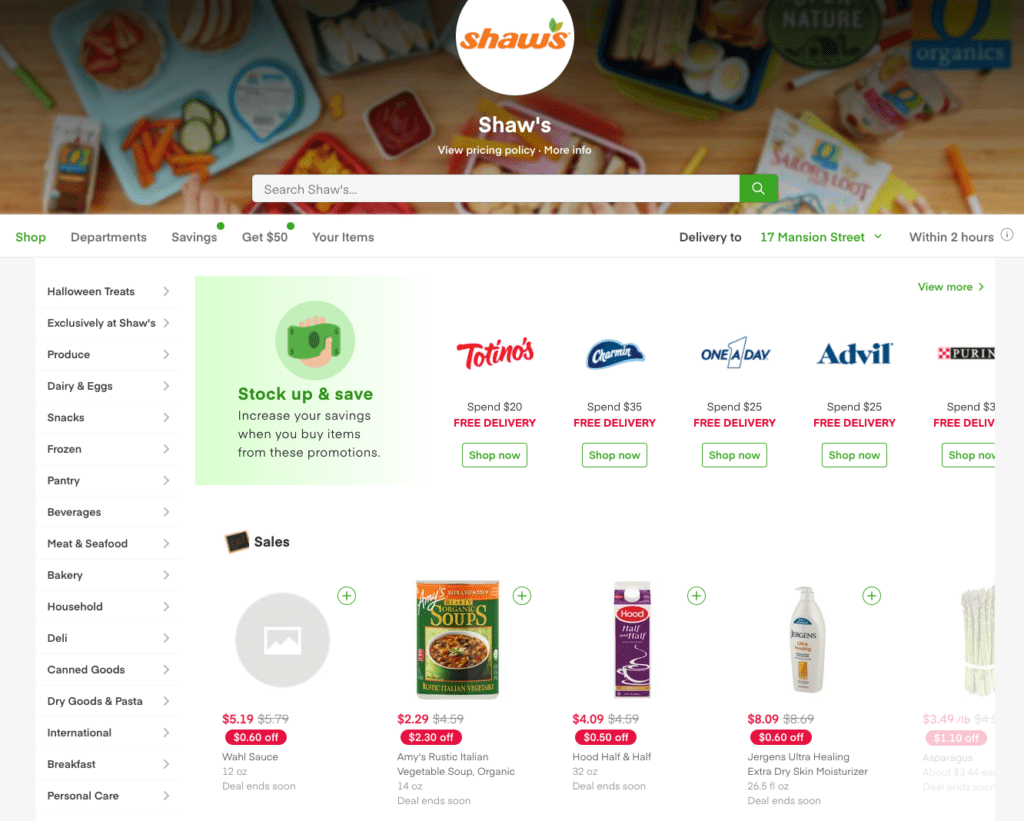The New Normal: Grocery Stores Are Forced to Uplevel Digital Experience
Why grocers to are turning to AI-powered shopping tools to help answer online questions.

During March in the UK, roughly £10.82 billion was spent at supermarkets around the country, according to Quartz. People began stockpiling, with families spending more than they normally would due to fear of supply chain disruption. Reuters reported that Britons spent a record 1.2 billion pounds online buying groceries during a four week period in April and May, with 1.1 million shoppers ordering groceries online for the first time ever.
For most grocers who focus on the in-store experience, with enticing biscuit displays and thoughtfully positioned sweets near check out, they were scrambling to bring their online systems and shops into the new decade.
Grocers Prepare Their Virtual Queues
For some retailers online sales have doubled thanks to Covid-19, necessitating virtual queueing systems to throttle website traffic to a manageable level. But what happens when your new online customers, unfamiliar with your products and services enter the store and have questions or need to find out information about both product and no- product information? How can you make friendly staff online accessible? And then multiply that by the thousands of shoppers ordering groceries at any given time?

Retailers from grocery to high-end fashion are turning to artificial intelligence-powered shopping aids to help answer online shoppers questions. However, a virtual assistant is only as good as the question and answer system behind it.
Legacy Solutions Fall Flat
Most legacy self-service knowledge solutions suffer from the same limitation: they are static, rules-based systems. So when a shopper searches for “where is the store?” and instead of getting the address of the closest shop based on geo signals, they get a dreaded null results page, they’re unable to help themselves. And they may even head over onto your competitor’s website.

The same goes for product questions. If I’m looking for “clementines” but the search doesn’t associate “Super Easy Peelers” with my search because it didn’t have an exact text match, I’m likely to assume the store doesn’t have them and go elsewhere for my oranges.
If you were at a store, you’d just ask a person! And get an instant answer.
One answer for retailers may be found through using AI-driven technologies to augment search performance.
Gartner predicts that 20% of all new chatbot and virtual assistant implementations will be done on conversational AI middleware that supports multiple NLP back ends. This new technology is a type of conversation AI middleware that brings the power of search and machine learning (ML) to applications like chatbots and virtual assistants.
By employing deep learning, chatbots are better at understanding intent and answering customers’ questions so that, even if retailers are not seeing them in-store, you’re still serving them a high quality experience online.
Welcome to the New Normal

This can feel like a lot to take on. I’d recommend starting with the low-hanging fruit to ensure that your shoppers can find what they need when they need it. Be sure to track and incorporate user behavior signals like common search phrases used, click through rates, and dead-end searches to easily identify and fix issues in the short-term.
The long-term will require more investment. In a recent interview, Thomas Brereton, a retail analyst at research firm GlobalData, suggested that, “the switch to shopping from home was unlikely to reverse even if the government-imposed lockdown to prevent the spread of the virus is eased later in the year.” This means that Investments today in technology like AI middleware for chatbots will be well worth it in the long-term for retailers.
The original version of this article can be found at IMRG.
LEARN MORE
Contact us today to learn how Lucidworks can help your team create powerful search and discovery applications for your customers and employees.